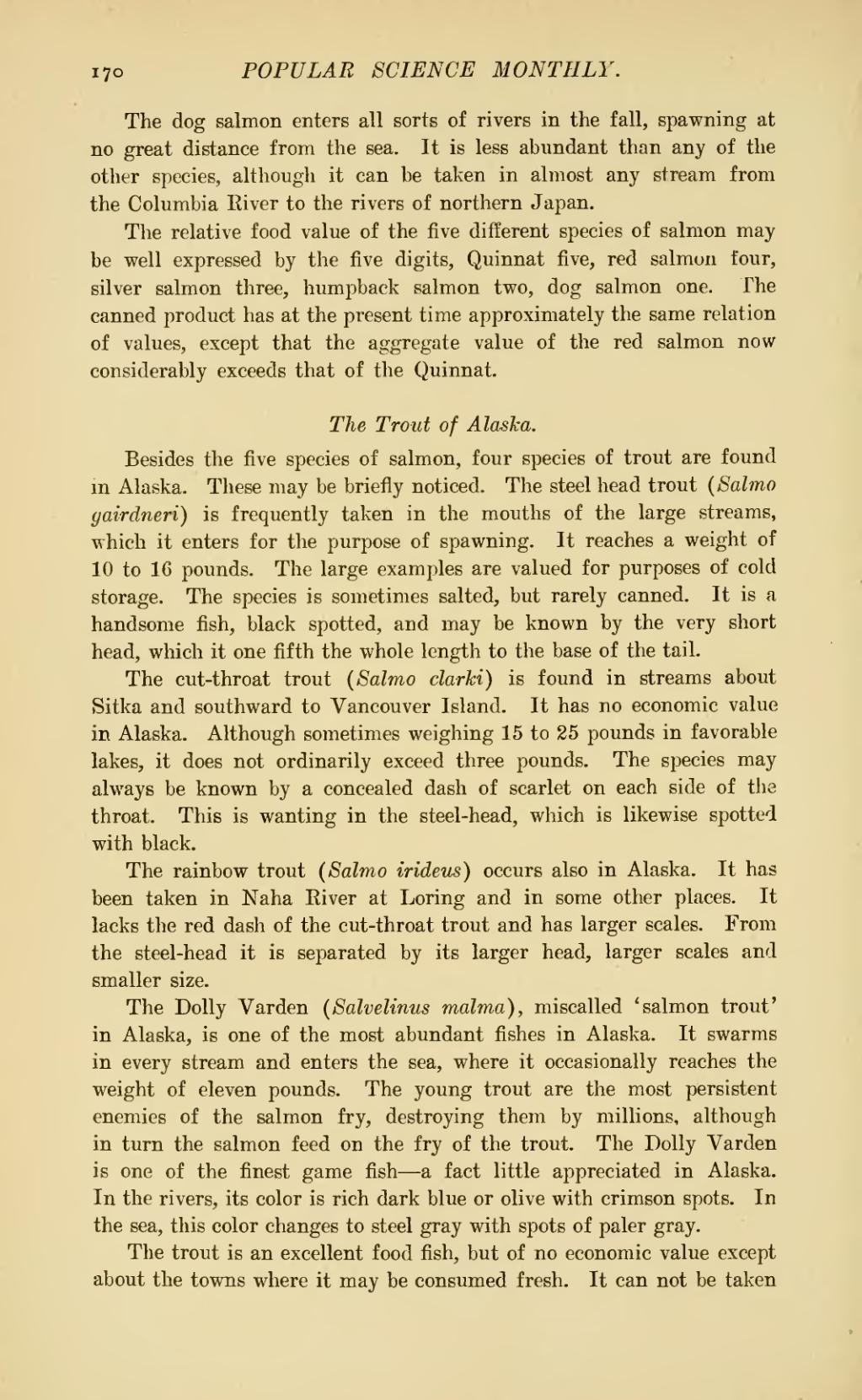The dog salmon enters all sorts of rivers in the fall, spawning at no great distance from the sea. It is less abundant than any of the other species, although it can be taken in almost any stream from the Columbia River to the rivers of northern Japan.
The relative food value of the five different species of salmon may be well expressed by the five digits, Quinnat five, red salmon four, silver salmon three, humpback salmon two, dog salmon one. The canned product has at the present time approximately the same relation of values, except that the aggregate value of the red salmon now considerably exceeds that of the Quinnat.
The Trout of Alaska.
Besides the five species of salmon, four species of trout are found m Alaska. These may be briefly noticed. The steel head trout (Salmo gairdneri) is frequently taken in the mouths of the large streams, which it enters for the purpose of spawning. It reaches a weight of 10 to 16 pounds. The large examples are valued for purposes of cold storage. The species is sometimes salted, but rarely canned. It is a handsome fish, black spotted, and may be known by the very short head, which it one fifth the whole length to the base of the tail.
The cut-throat trout (Salmo clarki) is found in streams about Sitka and southward to Vancouver Island. It has no economic value in Alaska. Although sometimes weighing 15 to 25 pounds in favorable lakes, it does not ordinarily exceed three pounds. The species may always be known by a concealed dash of scarlet on each side of the throat. This is wanting in the steel-head, which is likewise spotted with black.
The rainbow trout (Salmo irideus) occurs also in Alaska. It has been taken in Naha River at Loring and in some other places. It lacks the red dash of the cut-throat trout and has larger scales. From the steel-head it is separated by its larger head, larger scales and smaller size.
The Dolly Varden (Salvelinus malma), miscalled 'salmon trout' in Alaska, is one of the most abundant fishes in Alaska. It swarms in every stream and enters the sea, where it occasionally reaches the weight of eleven pounds. The young trout are the most persistent enemies of the salmon fry, destroying them by millions, although in turn the salmon feed on the fry of the trout. The Dolly Varden is one of the finest game fish—a fact little appreciated in Alaska. In the rivers, its color is rich dark blue or olive with crimson spots. In the sea, this color changes to steel gray with spots of paler gray.
The trout is an excellent food fish, but of no economic value except about the towns where it may be consumed fresh. It can not be taken
